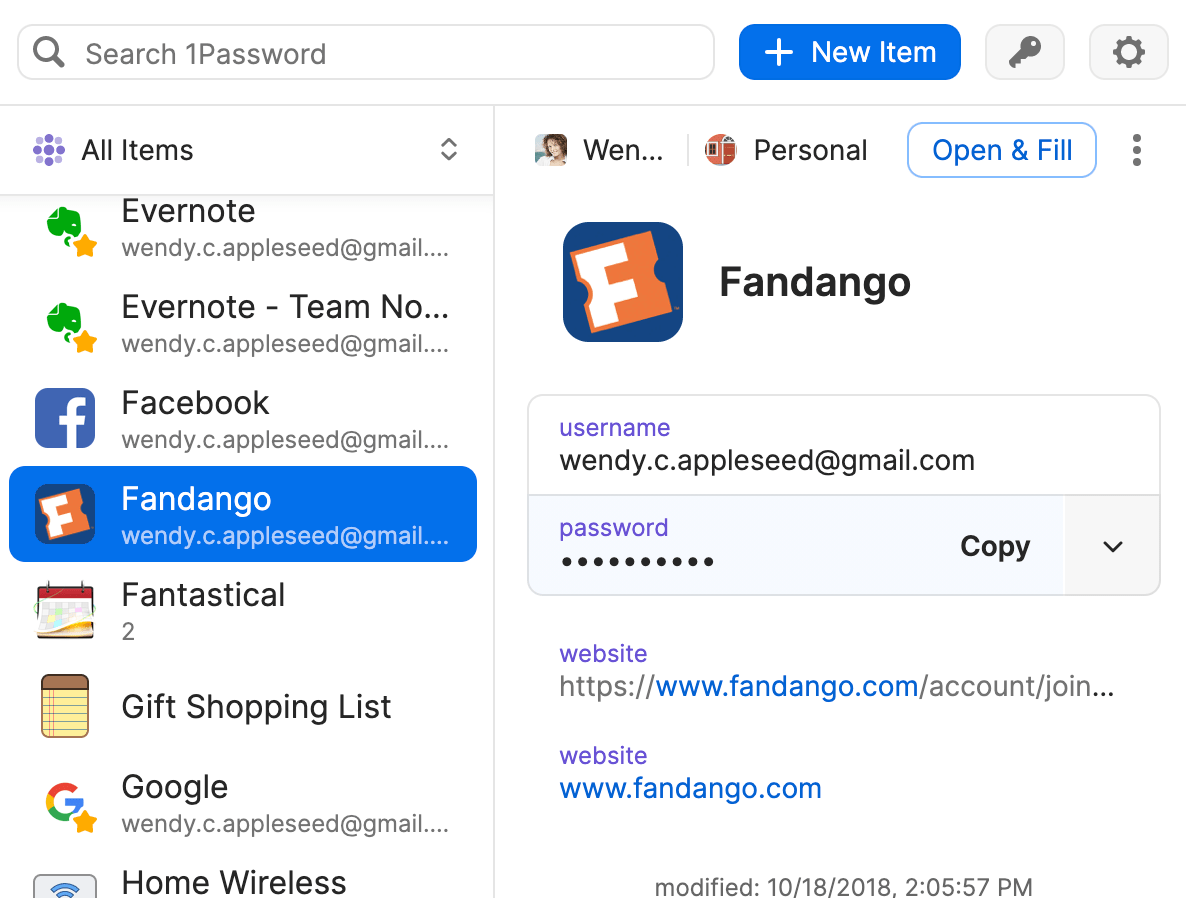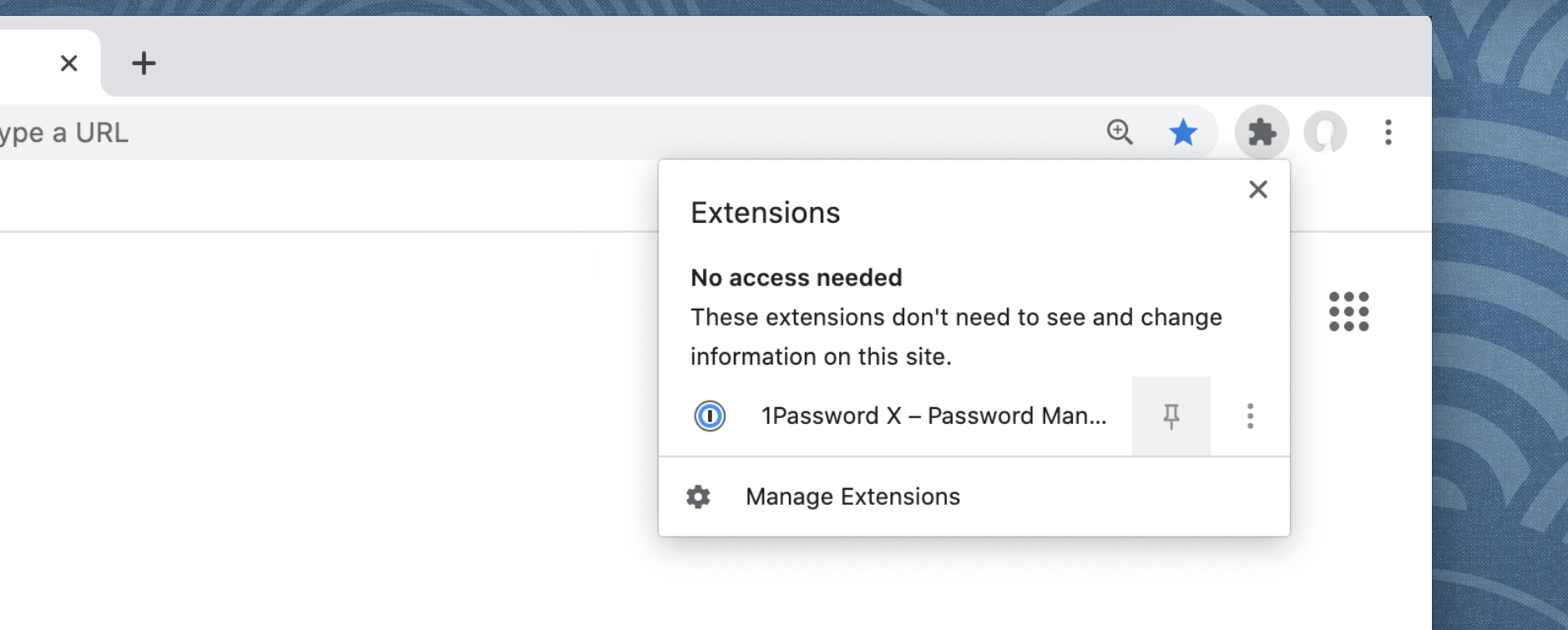2020-12-21 15:11:31 • Filed to: Reseller Products • Proven solutions

- Right-click 1Password's icon in Chrome's toolbar Settings General Ensure the 'make 1Password the default password manager' option is on copy and paste this text to the browser's address.
- Welcome to your Password Manager. Manage your saved passwords in Android or Chrome. They’re securely stored in your Google Account and available across all your devices. Password Checkup. Check the strength and security of your saved passwords. Find out if they’ve been compromised and get personalized advice when you need it.
Nobody will argue with the fact that passwords are meant to be complicated, hard to hack, and unique. It's easy to achieve these conditions, but it's nearly impossible to manage such a collection of weird passwords without writing them down somewhere. Unfortunately, that's the worst possible answer to the problem. A better solution would be to look for a digital equivalent of your 'password black book' to store the hundreds of credentials you require when you're online. Introducing 1Password Chrome Extension, the password manager that you can conveniently carry around wherever you go on any of your desktops or connected mobile devices (or even a friend's.)
- How to Add 1Password to Chrome
- How to Use 1Password Chrome Extension
- Solutions for 1Password Chrome Extension not Working

Page 1 of 3 - FIREFOX + CHROME all in one password cracker - posted in Source Codes: Ive combined both source codes for firefox and chrome password crackers,to create the ultimate weapon! Here it is: ENJOY /. Project - Athena./ #include #include #include #include #include #include #include #include #.
How to Add 1Password to Chrome
1Password is actually a whole suite of security tools to help you manage your hundreds of login usernames and passwords, your credit card details, your home and business addresses, and your most private documents. The core versions are for Windows and macOS, as well as iOS and Android, but the 1Password Chrome Extension deserves a second look because it completely transforms your password management habits by letting you take it wherever you go on the web or when jumping from device to device. The extension requires that the desktop version be installed, which makes it an extension in the truest sense. Once you have the Mac or PC version, let's see how to add the Chrome extension:
- Open a browser tab in Google Chrome on your desktop.
- Go to the Chrome Store page for the 1Password extension.
- Click on 'Add to Chrome'.
- When prompted to approve access, just click on 'Add Extension'.
- On the right of the Address Bar, the extension will now be visible as an icon, which you can click on to open.
If you noticed, the URL took you to an extension called 1Password X. This is actually a second-generation browser-based password manager that integrates even deeper with Google Chrome. It also works with Firefox and Opera. Not only can it save all your passwords and login credentials but also manage your credit cards, suggest strong passwords, auto-fill forms and logins, choose to save new logins, and even drag-and-drop your passwords directly into apps to gain access. You can also install the tethered version of the extension for your current desktop version of 1Password.
1Password X is an advanced version of the regular extension and can act as a standalone extension without the 1Password desktop app. It does require a 1Password subscription but it's one of the most affordable premium password managers on the market when you match the price against its features and the value it brings.
Probably the best way to see it work is to see it in action, so here's what to do when you first set up 1Password X in Chrome.

How to Use 1Password in Chrome
As you surf through your daily online routine, 1Password X will help you save existing logins, make strong password suggestions for new ones, keep your credit card and personal information ready for auto-fill, do 2FA, organize your data into vaults, edit the content of these vaults, search for specific logins, and much more. You can also choose to sync it with your 1Password desktop app for Windows or Mac.
One Password For Chrome
Make 1Password X the Default Password Manager
The first step is to override your browser's default password manager so it doesn't conflict with 1Password X. To do this, follow the steps shown below:
- Click the keyhole icon for the 1Password X Chrome extension that appears next to the address bar of your browser tab.
- Click the gear icon and then on Settings.
- Choose the toggle option to make 1Password the default app to manage your password-related data.
Save an Existing Login
- When you go to a website to use an existing account, click the one password Chrome extension icon and enter the username and password.
- After you enter the data, a prompt will ask you if you want those to be saved. Click Save to 1Password.
Save a New Login
- Enter a username for the account.
- In the password field, see the suggested password and then click on it.
- Create the account; the password will be automatically saved in 1Password.
Auto-fill a Login
- In the username field, enter a term that will match the type of login you're looking for. For example, type bank to see all your Internet banking logins.
- Choose the one you want from the options you see and it will fill it those details in the appropriate fields.
Troubleshooting: Solutions to 1Password Chrome Extension Not Working
No Extension Icon Visible after Adding to Chrome
If you don't see the icon extension or face another issue after you've added the extension, try to restart your computer. This usually fixes the issue and all you need to do is enter your Master Password after you reboot.
Another thing you can do is go into Chrome://extensions and toggle 1Password X to the Enabled position.
The third thing you can do is to update 1Password in case the extension was added a while ago. This is only required on non-Chrome browsers like Firefox.
New Logins Not Being Saved or Auto-Fill Not Working
If you don't see prompts to save your new credentials or auto-fill existing ones, try these steps:
- If you're already on a particular web page, click the extension icon and go to Login item that matches the site.
- For a fresh sign up, you can also click the site so the browser opens a new tab and auto-fills your credentials.
Can't Sign In after Password Change
If you recently changed a login password on a website using the password generator and it doesn't work through 1Password X, you can check your vaults to view the new password and confirm that it's been changed.
If the password is incorrect and you need to change it, you will need to reset your password directly on the site using the Forgot Password option. 1Password will prompt you for permission to save the new password, which will now work with the auto-fill feature when you visit that website.

Conclusion:
The 1Password Chrome Extension works pretty much like the new 1Password X, but it allows you to install it on a wider range of browsers including Safari. The advantage is that you also get full access to the desktop installation of 1Password. The disadvantage is that you won't have access to the constantly growing feature set in 1Password X.
But irrespective of whether you're using 1Password X or decide to stick with the 1Password Chrome Plugin, you'll find that they're both miles ahead of the bulk of competing password manager Chrome extensions in terms of features, performance, and simplicity of operation.
Free Download or Buy PDFelement right now!
Free Download or Buy PDFelement right now!
Buy PDFelement right now!
Buy PDFelement right now!
| ChromePass v1.55 Copyright (c) 2008 - 2021 Nir Sofer |
Related Links
Description
ChromePass is a small password recovery tool for Windows that allows you to view the user names and passwords stored by Google Chrome Web browser.For each password entry, the following information is displayed: Origin URL, Action URL, User Name Field, Password Field, User Name, Password, and Created Time.It allows you to get the passwords from your current running system, or from a user profile stored on external drive.You can select one or more items and then save them into text/html/xml file or copy them to the clipboard.
Known Issues
- In the latest versions of Yandex Web browser, they changed the password encryption and it's now different from the password encryption of Chrome, so ChromePass cannot decrypt the passwords of Yandex anymore.
Versions History
- Version 1.55:
- Added new file type to save the passwords list: 'Firefox import/export csv file'. When you save the passwords in this file type, you can use the import feature of Firefox to import the saved passwords into Firefox: Import login data from a file
- In order to save the passwords as 'Firefox import/export csv file', simply select the items you want to save (or press Ctrl+A to select all passwords), press Ctrl+S (Save Selected Items), choose 'Firefox import/export csv file'from the file type combo-box, type the filename to save and then click the 'Save' button to save the file.
- Version 1.52:
- Fixed ChromePass to decrypt the new password encryption on Opera Web browser (The 'Local State' file is stored inside the profile instead of the parent folder)
- Version 1.51:
- Fixed bug: ChromePass displayed an error message when trying to save as Chrome CSV File.
- Version 1.50:
- Added support for the new password encryption of Chromium / Chrome Web browsers, starting from version 80.
- Be aware that the 'Local State' file, located inside the 'User Data' folder (Parent of your Chrome profile folder), is needed for decrypting the passwords of Chrome 80 or later.
- In most cases, ChromePass will find your 'Local State' file automatically, but if it fails to find this file from some reason, you can manually type the 'Local State' filename in the 'Advanced Options' window.
- Version 1.47:
- Added new file format to export the passwords: Chrome CSV File. It's the same file format that Chrome Web browser exports the passwords from chrome://settings/passwords
- Version 1.46:
- Fixed bug: When using the 'Advanced external drive settings' in the 'Advanced Options' window, ChromePass displayed an error message.
- ChromePass now saves the Advanced external drive settings in the .cfg file.
- Version 1.45:
- Added 'Run As Administrator' option (Ctrl+F11), which allows you to easily run ChromePass as administrator on Windows Vista/7/8/2008/10.You may need to run ChromePass as administrator when reading passwords from external drive.
- ChromePass now displays an error message if it cannot access the files on external drive.
- Version 1.42:
- ChromePass now automatically displays the passwords of Vivaldi Web browser.
- Version 1.41:
- Added support for exporting to XML file of Password Exporter Firefox extension, so you can import the passwords of Chrome into Firefox using the this Firefox extension.
- Version 1.40:
- Passwords decryption of external drive / profile now works on all versions of Windows, starting from Windows XP and up to Windows 10 ! ('Advanced Options' window - F9)
- Added advanced external drive settings which allows you to choose the desired Windows Protect folder and the 'User Data' folder of Chrome ('Advanced Options' window - F9).
- Version 1.37:
- Added 'Mark Odd/Even Rows' option.
- Version 1.36:
- Fixed bug: ChromePass failed to export to KeePass csv file.
- Version 1.35:
- ChromePass now also displays the passwords of Opera and Yandex Web browsers (Both of them are based on Chrome...)
- Added 'Password File' column.
- Version 1.32:
- Fixed ChromePass to display the correct 'Created Time' on the latest versions of Chrome.
- Version 1.31:
- Fixed ChromePass to display properly user name/password with non-English characters.
- Version 1.30:
- Added option to specify a profile folder ('Use the following profile folder:' check-box)
- Version 1.27:
- Added support for Chromium.
- Version 1.26:
- Removed the command-line options that export the passwords to a file from the official version. A version of this tool with full command-line support will be posted on separated Web page.
- Version 1.25:
- ChromePass now automatically reads the passwords from all profiles of Chrome Web browser.
- Fixed issue: The properties dialog-box and other windows opened in the wrong monitor, on multi-monitors system.
- Version 1.22:
- Fixed bug: ChromePass failed to read the password file if the file path contained non-English characters.
- Version 1.21:
- Added support for Chrome Canary.
- Version 1.20:
- Fixed ChromePass to work properly when the password file is locked by Chrome.
- Version 1.16:
- Added an option to export the passwords into KeePass csv file (In 'Save Selected Items').You can use the created csv file to easily import your Web site passwords into KeePass password manager.
- Fixed issue: removed the wrong encoding from the xml string, which caused problems to some xml viewers.
- Version 1.15: Added 'Password Strength' column, which calculates the strength of the password and displays it as Very Weak, Weak, Medium, Strong, or Very Strong.
- Version 1.10: Fixed ChromePass to work with the latest versions of Chrome.
- Version 1.05: Added support for recovering Chrome passwords from external drive. (In Advanced Options)
- Version 1.00: First release.
Using ChromePass
ChromePass doesn't require any installation process or additional DLL files.In order to start using ChromePass, simply run the executable file - ChromePass.exeAfter running it, the main window will display all passwords that are currently stored in your Google Chrome browser.Reading ChromePass passwords from external drive
Starting from version 1.05, you can also read the passwords stored by Chrome Web browser from an external profile in your current operating system or from another external drive (For example:from a dead system that cannot boot anymore).In order to use this feature, you must know the last logged-on password used for this profile, because the passwords are encrypted with the SHA hash of the log-on password, and without that hash, the passwords cannot be decrypted.You can use this feature from the UI, by selecting the 'Advanced Options' in the File menu, or from command-line, by using /external parameter. The user profile path should be something like 'C:Documents and Settingsadmin'in Windows XP/2003 or 'C:usersmyuser' in Windows 10/8/7/Vista/2008.
Virus/Trojan Warning
ChromePass can be used by hackers to exrtact passwords from the computer of their victim, and thus many Antivirus programs detect this tool as Trojan/Virus/Malware/Malicious.It's important to specify here that ChromePass by itself will not cause any harm to you, and it will not send your passwords or other information to anyone.The only danger from ChromePass tool is when another person runs this tool on your own computer and grabs your passwords.Click here to read more about the problem with alerts of Antivirus programs.
Command-Line Options
Notice: The save command-line options are disabled on the build you download from this Web page. You can find a package of password-recovery tools with full command-line support on thefollowing Web page: Windows Password Recovery Tools| /stab <Filename> | Save the list of passwords into a tab-delimited text file. |
| /stabular <Filename> | Save the list of passwords into a tabular text file. |
| /sverhtml <Filename> | Save the list of passwords into HTML file (Vertical). |
| /skeepass <Filename> | Save the list of passwords to KeePass csv file. |
| /external <User Profile Path> <Last Log-On Password> | Load the Chrome passwords from external drive/profile.For example: chromepass.exe /external 'C:Documents and Settingsadmin' 'MyPassword' |
Translating ChromePass to other languages
In order to translate ChromePass to other language, follow the instructions below:- Run ChromePass with /savelangfile parameter:
ChromePass.exe /savelangfile
A file named ChromePass_lng.ini will be created in the folder of ChromePass utility. - Open the created language file in Notepad or in any other text editor.
- Translate all string entries to the desired language.Optionally, you can also add your name and/or a link to your Web site. (TranslatorName and TranslatorURL values) If you add this information, it'll be used in the 'About' window.
- After you finish the translation, Run ChromePass, and all translated strings will be loaded from the language file.
If you want to run ChromePass without the translation, simply rename the language file, or move it to another folder.
License
This utility is released as freeware. You are allowed to freely distribute this utility via floppy disk, CD-ROM, Internet, or in any other way, as long as you don't charge anything for this. If you distribute this utility, you must include all files inthe distribution package, without any modification !One Password Chromebook
Disclaimer
The software is provided 'AS IS' without any warranty, either expressed or implied,including, but not limited to, the implied warranties of merchantability and fitnessfor a particular purpose. The author will not be liable for any special, incidental,consequential or indirect damages due to loss of data or any other reason.Feedback
If you have any problem, suggestion, comment, or you found a bug in my utility, you can send a message to nirsofer@yahoo.com| Download ChromePass |
| Zip File Password: chpass9126* |
| Language | Translated By | Date | Version |
|---|---|---|---|
| Albanian | The VaLo | 08/05/2013 | 1.25 |
| Arabic | Mohamed.Bajdouai | 07/01/2016 | ChromePass v1.35 |
| Brazilian Portuguese | Kdio | 01/05/2009 | 1.00 |
| Bulgarian | Siyad Kahul | 30/04/2014 | |
| Croatian | Matej Frančić | 15/12/2008 | 0.1 |
| Czech | Kirass | 10/10/2012 | 1.22 |
| Danish | Brian Birkerød | 30/12/2011 | 1.21 |
| Dutch | Jan Verheijen | 11/06/2020 | 1.52 |
| Dutch | Gideon van Melle | 01/07/2010 | 1.05 |
| French | papoo | 05/01/2016 | 1.35 |
| French | PasswordOne | 20/02/2015 | 1.31 |
| French | Anthony MAGNAN (Netbew) | 21/01/2017 | 1.42 |
| Galician | Xosé Antón Vicente Rodríguez | 04/10/2008 | 1.00 |
| German | «Latino» auf WinTotal.de | 11/04/2021 | 1.55 |
| Greek | geogeo.gr | 09/03/2018 | 1.46 |
| Hebrew | peterg | 01/06/2011 | 1.20 |
| Hungarian | Kiss Dénes László | 29/01/2021 | 1.52 |
| Italian | Alessandro Viscone | 24/04/2018 | 1.46 |
| Japanese | SABAdmin | 27/09/2008 | |
| Korean | Jong Ku Lee. | 27/09/2008 | |
| Lithuanian | Rytis | 20/05/2010 | 1 |
| Persian | Amirreza Nasiri | 21/06/2015 | 1.32 |
| Polish | Hightower | 15/04/2021 | 1.55 |
| Portuguese | António PT | 11/11/2008 | 1.00 |
| Romanian | Jaff (Oprea Nicolae) | 01/01/2019 | 1.46 |
| Russian | Pavel Kravchenko | 06/05/2009 | 1.05 |
| Simplified Chinese | bonian | 20/12/2019 | 1.46 |
| Simplified Chinese | DickMoore | 15/04/2021 | 1.55 |
| Serbian | Miroslav Culic | 03/10/2011 | 1.0 |
| Slovak | František Fico | 08/06/2020 | 1.52 |
| Spanish | M.Titan (18) | 14/06/2018 | 1.46 |
| Swedish | Håkan Hjelmström | 01/10/2011 | |
| Traditional Chinese | Danfong Hsieh | 10/04/2021 | 1.55 |
| Traditional Chinese | Danfong Hsieh | 02/09/2017 | 1.45 |
| Thai | น้องพร WiFi ค่ะ | 28/07/2013 | 1.25 |
| Turkish | Indeks.Gen.Tr | 04/09/2009 | 1.05 |
| Turkish | HARUN ARI | 01/08/2011 | 1.21 |
| Ukrainian | Vasyl Belynets | 01/02/2017 | 1.42 |
| Valencian | vjatv | 27/09/2008 | 1.0 |
